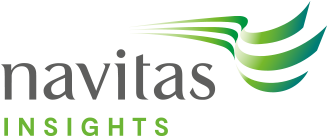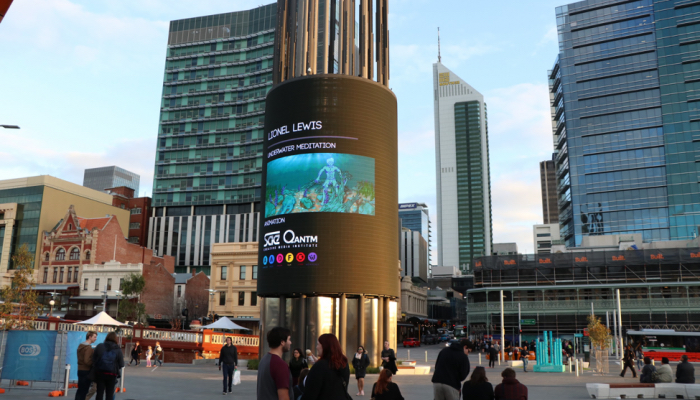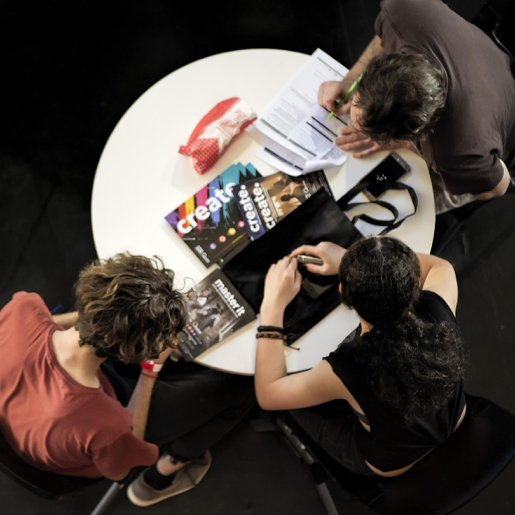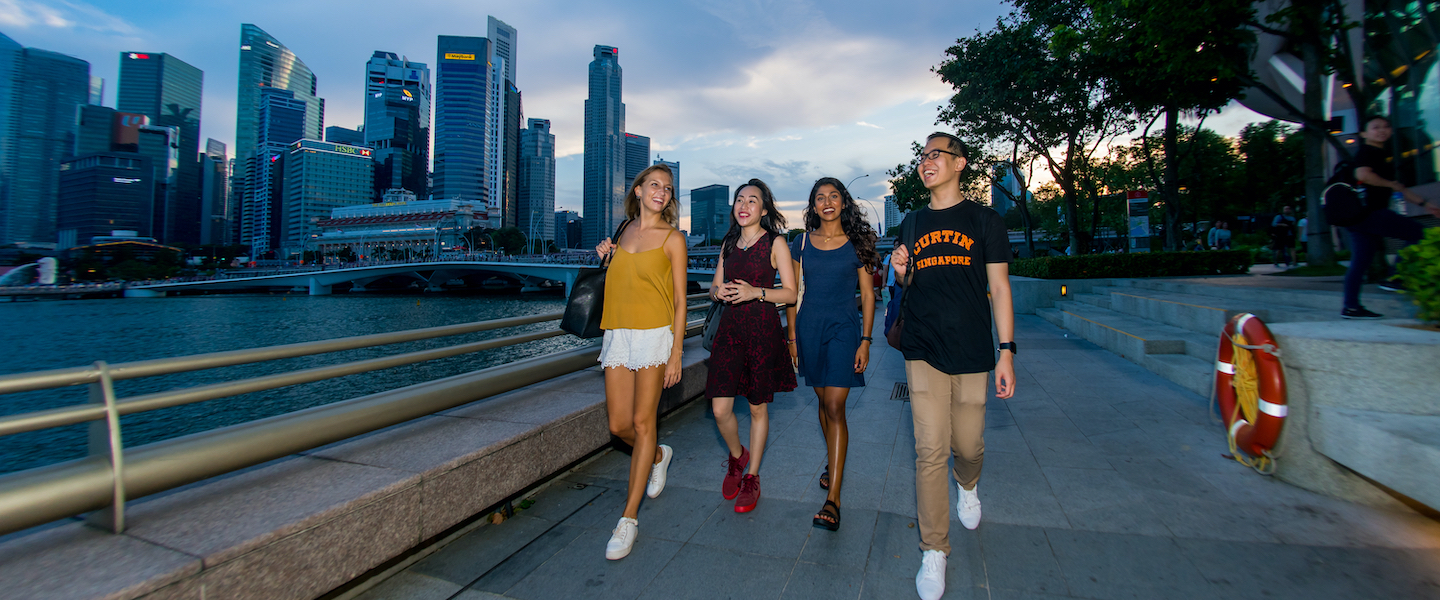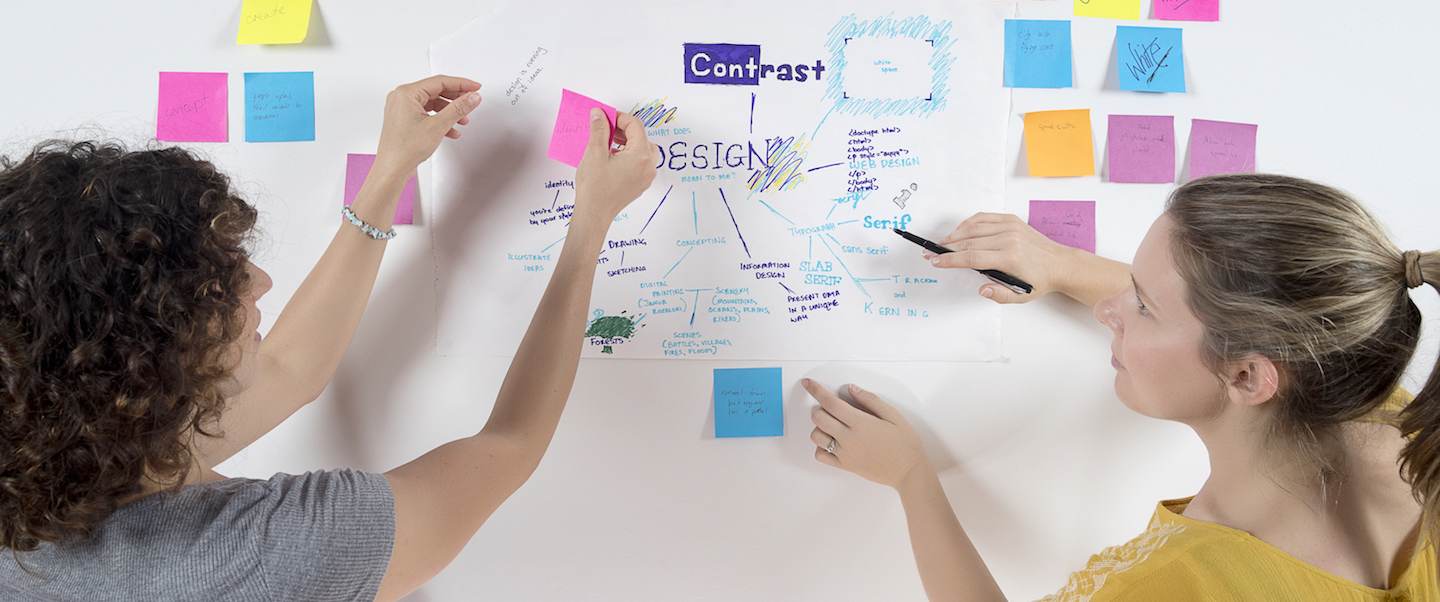
Master of all trades, jack of none
Although most education providers embed projects into their curriculum, not all projects are created equal in either outcome or delivery. Importantly, we need to recognise the distinction between Project Based Learning (PBL) and Project Oriented Learning (POL).
In POL, students gain skills and knowledge through traditional means such as lectures and tutorials. This leads to the creation of a type of group project, often followed by a piece of critical reflection to foster improvement. Students are given a range of content just in case they need it for the project. Content is usually provided over a series of pre-arranged lecturer topics over a given teaching period, and students apply this information to the project. There are a number of limitations with this method, including:
- The project created by the student is usually the first and last project of that type.
- The student doesn’t have the opportunity to re-draft the assessment and apply feedback.
- Interactions between faculty and students are influenced by a project that favours pre-determined solutions over creative thinking.
In contrast, PBL reverses this just in case learning system, where students are taught concepts and techniques in case they need them in the (hopefully near) future, to a just in time approach where students are provided information when it is most relevant to them and can benefit from its direct application.
In PBL, students are introduced to the problem up-front, and it is designed to drive emergent thinking. If done correctly, this will elicit multiple solutions to the problem.
Often referred to as an ‘intentionally ill-structured problem’, this allows students to immediately apply and benefit from the content they are being taught – as long as it is bite-sized and relevant at that point in time.
Students also have the opportunity to create multiple drafts of the same project throughout the trimester, refining technique and applying feedback from peers and colleagues. SAE took this approach one collaborative step further, by integrating students into functional learning teams which in turn promotes the sharing and development of creative ideas – often leading to unexpected but desirable solutions.
Implementing Collaborative Project Based Learning
As a practice-based provider of accredited higher education programs in creative media, with strong links to industry, SAE has always ensured that its curriculum has a strong practical element.
However, when it moved to Collaborative Project Based Learning (CPBL) in 2014, it was a significant shift in program delivery. Open-ended interdisciplinary collaboration, engagement with local communities and a significant focus on the development of transferable skills such as teamwork and communication were central to this change.
The outcomes are tangible. For example, when Screen West, Ramus Illumination and the Metropolitan Redevelopment Authority invited SAE film, audio, animation and design students to create public art installations that captured the essence of WA, the collaborative project resulted in Yagan Square’s Audio-visual tower.
Why is CPBL important today?
We cannot ignore the fundamental changes in industry, including the changing nature of employment, a global democratisation of collaboration and communication technologies, and upheavals in the distribution and management of creative intellectual property. This prompted SAE to re-think traditional teaching methods, and shift focus from ‘the gear’ to ‘the process’ – targeting adaptability, creativity and transferable skills more explicitly.
CPBL is not new. It has been used in medicine, engineering, teaching and other fields for several decades, with a variety of names and descriptions. Regardless of the discipline, it involves placing an intentionally ill-structured problem with multiple complex solutions and unique outcomes in front of an individual or group. Students are guided to propose, develop, build, cure, subvert or otherwise solve the problem at hand. For students at SAE, CPBL is made up of the following three core elements:
- The project (the intentionally ill-structured problem that promotes learning)
- A driving question – This does not need to be specific to creative media, but may be designed to get students to think about how creative media may be used to address broader social issues. For example: ‘How can we use creative media to help tackle the rising epidemic of childhood obesity?’
- A set of constraints – Constraints ensure students meet certain technical standards, and also push them to think creatively about the issue. Limited resources are often a key constraint, as well as more creative constraints such as addressing certain key words.
- An authentic audience – A key group of stakeholders who will form part of the development and consultation process surrounding the project’s inception.
- Multiple drafts – Any project in SAE’s CPBL framework must be able to be achieved multiple times. In some cases this may mean a series of similar short projects, a ‘vertical slice’ of a larger project (such as a single scene), or multiple small projects that build upon the learning. This allows students to apply feedback and iterate – something Project Orientated Learning lacks.
- Grading and assessment
- A holistic grading framework for all students – SAE’s criteria is consistent between all discipline groups, but adapted to the level of the student’s learning. High grades are reserved for students who demonstrate exceptional creative and collaborative ability to achieve the project’s execution and outcome.
- A transferable skills framework – this defines specific desirable and undesirable behaviours, and is used for ongoing formative feedback to develop soft skills in students.
- Expert facilitators – CPBL challenges the outdated notion of ‘sage on the stage’, instead creating an ‘apprentice and mentor’ relationship between faculty and students. Our facilitators are expert educators, mentors and production managers.
New approach reflects student expectations
To coincide with deployment of CPBL, we surveyed first trimester SAE students about their learning expectations. Unanimously, they believed that they would be making things in collaboration with their peers, working on projects that have real-world implications and be engaged as key stakeholders in designing these projects. In many ways, SAE Institute’s implementation of CPBL matched innovative education theory and practice to meet these student expectations.
As educators, we analyse a variety of metrics to inform our program development, delivery methods, student support and staff development. This data generally includes grade distributions and pass rates, retention, student satisfaction surveys, internship reports and graduate outcomes. CPBL asks us to also consider other external measures, such as the readership and impact of student reflective blogs, attendance at student work exhibitions, and industry feedback on collaborative projects.
Early success indicators
In the past three years, SAE recorded significant teaching and learning improvements as a direct result of CPBL, including:
- Almost 50% reduction in overall fail rates,
- Almost 50% reduction in attrition, particularly in the latter two-thirds of our courses where CPBL is the exclusive teaching method,
- Excellent student satisfaction outcomes, based on internal and independent external research,
- Re-engagement of SAE students over longer internship and work placement periods, and
- A significant increase in the number of industry professionals applying to work at SAE.
Navigating a challenging landscape
These outcomes are not easily achieved. Implementing CPBL into the curriculum requires a significant commitment to change from faculty and management. Old methods of teaching and learning have to be shaken off – including the subtle shift from lecturer to facilitator.
Despite CPBL being present in some secondary schools, students often need help to become self-directed, guided and collaborative learners. Facilitators may also need help developing core skills in diverse areas such as problem solving, time management, innovation and communication. Multi-tasking and a passion for learning and teaching are critical to this model’s success, and social and emotional intelligence are essential attributes for any facilitator as they guide students from the classroom into real-world environments.
SAE provides professional development and constant support to help faculty to stay on track, on both a local and global level. While local training is key to onsite implementation, having an institute-wide strategic focus on faculty development allows for quality assurance across campuses. If the CPBL is tainted by ‘sage on the stage’ or ‘guide at the side’ approaches, it can fail dramatically. Peer support, such as sharing of best practice and collaboration on both projects and pedagogy, is vital, as are frequent opportunities for faculty to engage in their own creative practice.
Students also need support to adapt to this method, so they can be both reflective and reflexive in their learning. The emphasis on group work and social interaction can raise challenges, as the creative industries traditionally attract students with varied cognitive profiles or narrow interests. We should also consider the recent rise in adolescent mental health problems, which is very visible in our sector. Early indications suggest that embracing these differences and challenges provides a richer experience for all students, and that the CPBL approach is indeed an excellent fit for our student profile given its in-built peer support networks and opportunities for discovery and change.
The future of CPBL
It has been almost five years since CPBL was implemented at SAE, and we are now focused on how we take this model forward. There is no doubt that CPBL has been a success, but where does its future lie at SAE? Here are a few considerations that will inform the next stage of curriculum development and delivery:
- Remote practice is now an industry staple, but CPBL at SAE has largely been constrained to the on-campus model. We are looking at how students can undertake a range of collaborative projects with colleagues from across the global SAE network.
- As educators, we need to understand how AI impacts traditional notions of academic integrity. Can we incorporate AI into our curriculum design and still ensure that students are learning what they need to know? If you think back to your own experience at school, do you remember being told that you need to know the formulas because you won’t always have a calculator?
- Can projects themselves underpin all curriculum design? If so, we need to still meet the varying legislative requirements of the countries in which we operate.
Every complex challenge presents an opportunity for innovation, and these are just some of the questions SAE is exploring in developing CPBL’s future implementation.
